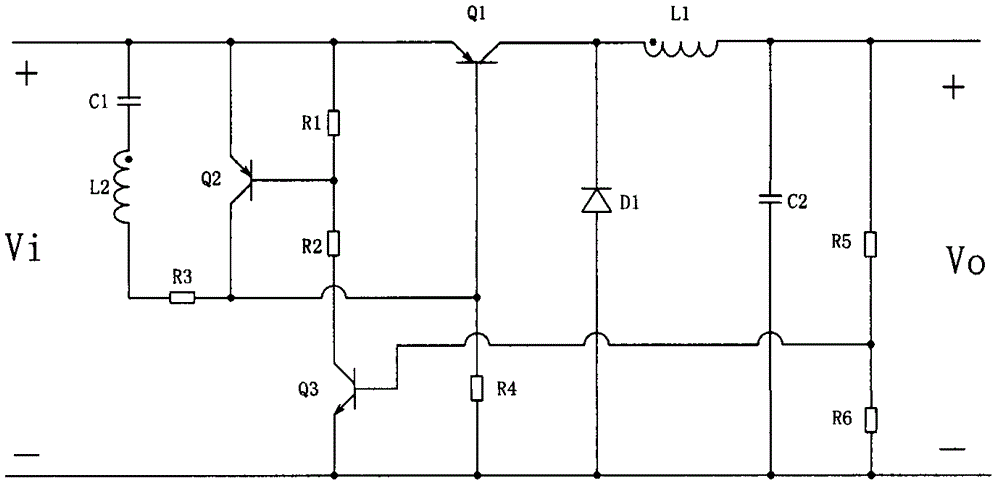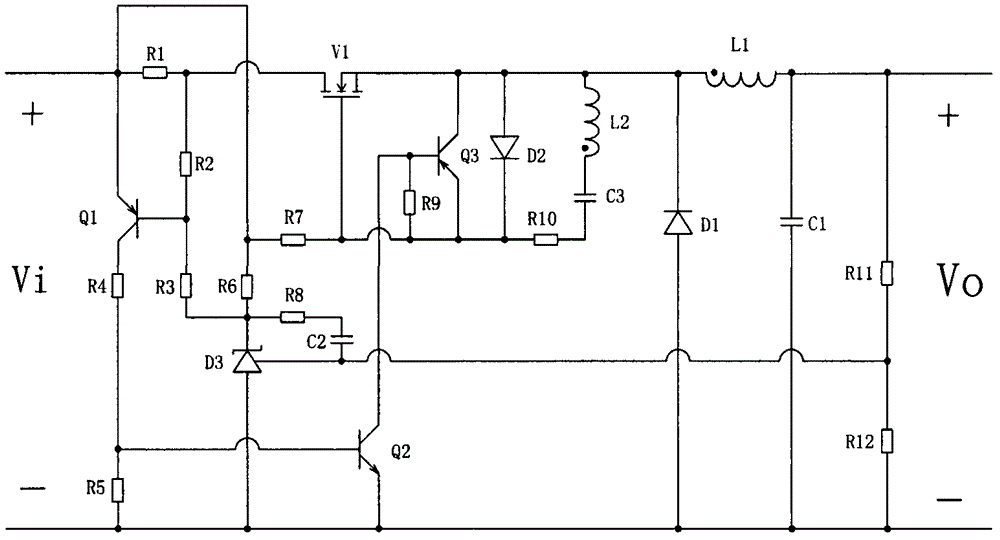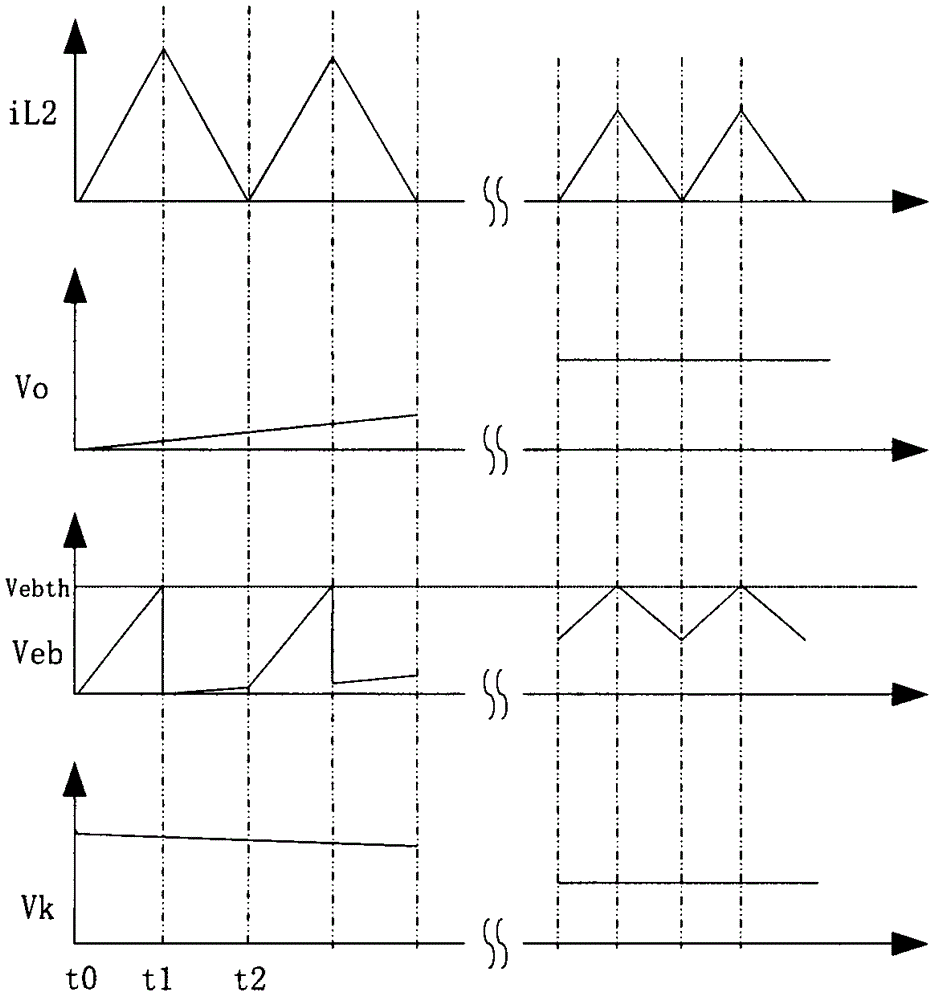Self-excited Buck circuit
A self-excited, circuit technology, used in electrical components, adjusting electrical variables, instruments, etc., can solve problems such as insufficient output voltage stability, achieve good adjustment rate, reduce the number of coupled inductor turns, and achieve the effect of protection
- Summary
- Abstract
- Description
- Claims
- Application Information
AI Technical Summary
Problems solved by technology
Method used
Image
Examples
Embodiment Construction
[0022] The specific embodiments of the present invention will be further introduced below in conjunction with the accompanying drawings.
[0023] Such as figure 2 As shown, the present invention is the self-excited Buck conversion circuit, including: inductor L1, capacitor C1, diode D1, switch tube V1 and output sampling resistors R11, R12, and also includes current sampling resistor R1, PNP transistor Q1, PI Regulating circuit, self-excited drive circuit. The PI regulation circuit includes a reference regulator D3, a capacitor C2 and resistors R6 and R8. The self-excited drive circuit includes a coupling inductor L2, a capacitor C3, and a resistor R10.
[0024] In the circuit, Vi and Vo are the input and output voltages of the converter respectively. Inductor L1, capacitor C1, diode D1, and switch tube V1 constitute the Buck main circuit. In the Buck main circuit, the current sampling resistor R1 is connected in series with the Buck main circuit. Among them, one end of ...
PUM
 Login to View More
Login to View More Abstract
Description
Claims
Application Information
 Login to View More
Login to View More - R&D
- Intellectual Property
- Life Sciences
- Materials
- Tech Scout
- Unparalleled Data Quality
- Higher Quality Content
- 60% Fewer Hallucinations
Browse by: Latest US Patents, China's latest patents, Technical Efficacy Thesaurus, Application Domain, Technology Topic, Popular Technical Reports.
© 2025 PatSnap. All rights reserved.Legal|Privacy policy|Modern Slavery Act Transparency Statement|Sitemap|About US| Contact US: help@patsnap.com



